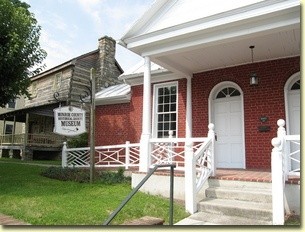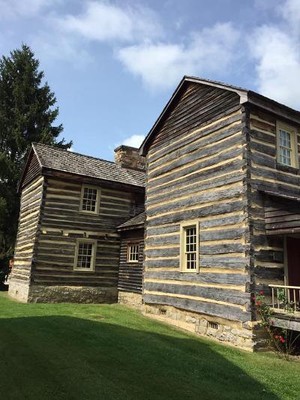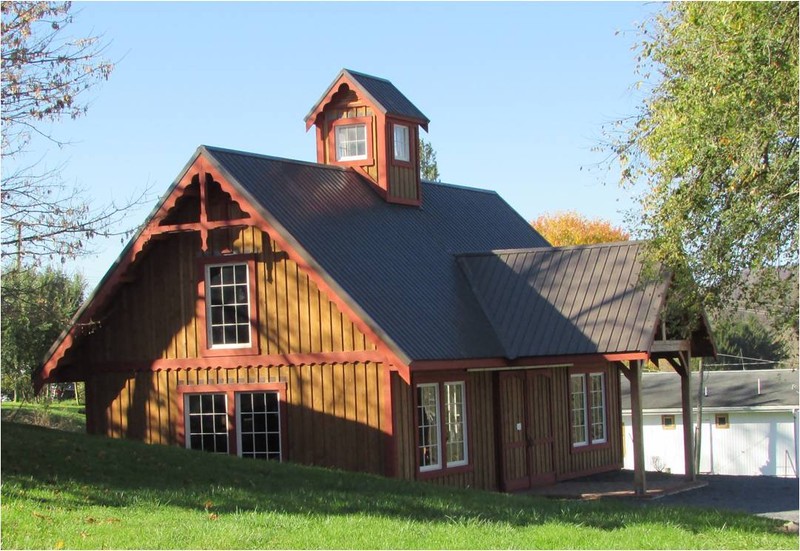This entry includes a walking tour! Take the tour.
Introduction
Text-to-speech Audio
The Monroe County Historical Society Museum opened in 1987 and offers exhibits of artifacts donated by families from across the county. The organization is dedicated to discovering, collecting, preserving, interpreting, and sharing the rich history, culture, and heritage of the past in order to inspire present and future generations to make the past a meaningful part of their contemporary lives. Exhibits include fossils, military artifacts, the once-famous springs resorts, and fabric arts. The museum is located in the Caperton Building and the two nearby log houses and carriage houses complete the museum campus. Guided tours are offered by volunteers. This tour includes the museum complex and then proceeds on to several nearby buildings in Union.
Images
Historical Society Museum Building

Clark-Wiseman Neel Log Cabins

Carriage House

Backstory and Context
Text-to-speech Audio
The first settlers arrived in the area around 1760. There was conflict with Native American people due to the fighting during the French and Indian War, and later during the American Revolution. Monroe County was formed from Greenbrier County in 1799. The new County was named for James Monroe, Virginia's governor at the time.
Monroe's economic basis has always been farming and timber harvesting. Beginning around 1790, two additional activities were important for about 70 years. It was the age of water power, and streams such as Indian Creek and The Second Creek supported more than two dozen water-powered mills. During the same period, the area's mineral springs became major summer resorts, catering to Southerners seeking relief from lowland summer heat.
After the Civil War, with the South's economy and social order devastated, the old resorts faded away. New railroads bypassed Monroe County except at its more accessible edges. Steam power and newer forms of energy overshadowed water power. Lacking suitable coal deposits, Monroe County lies outside the mining area which encompasses most of West Virginia. For these reasons, "Old Monroe" still relies largely on agriculture and retains its pastoral character.
The Historical Society Museum campus consists of three buildings:
- The Caperton Building, c. 1820 is the home of the Monroe County Historical Society and Museum and is the former law office of Hugh Caperton, one of the early prominent residents of Union. Mr. Caperton was a successful merchant in Union and built “Elmwood,” located just outside of town. The building, in the Early Classical Revival style originally had only three rooms. The work would have been done by slaves who dug clay pits, made the brick and fired it in kilns here on the property. In the 1860s the building became a branch of the Bank of Virginia and after 1863 became the Bank of Monroe, when the vault (located in the closet with folding doors) was added. Then it became The Bank of Union in 1872. At some point, the building became a private residence and remained so until 1987, when obtained by the Historical Society. Today, The Caperton Building is the main building where visitors are welcomed to the museum complex. The Building houses artifact exhibits and archives of genealogy records and resources for research into daily living. Publications are displayed for purchase. It also serves as a Tourist Information Center for Monroe County.
- The Clark Wiseman-Owen Neel House was built by combining two Monroe County log houses. In 1996, the society obtained ownership of the 1810 Clark Wiseman log cabin in Union, It was originally constructed on South Street as a two-story cabin. When the town fathers laid out the town plot for Union in 1799, they specified that each house be at least 16 x 18 feet, two stories in height, and built of brick, stone, or log. It also had to have a chimney of stone or brick and be finished inside in a craftsman-like manner. The Clark-Wiseman House was built to fit these demands. In 2005, the 1790 Owen Neel log house from Gap Mills was donated and became the kitchen/weaving wing. It represents a settler’s home of that period. We believe it was originally one room with a very low loft. The downstairs room would have been used for most everything, including sleeping facilities for the adults. The children would have slept in the loft, with access by an indoor ladder or outside stairs. Later, a second room and loft were added and that room became the parlor. Even later the roof was raised and the house then had four rooms. The double fireplace has separate flues for each side of the house. The two houses are furnished with Monroe County period pieces and artifacts.
- The Carriage House Museum, completed in 2014, is located on Middle Street adjacent to the Museum Complex. It houses the Society’s vintage 1880s Omnibus that transported guests to the springs resorts, as well as a variety of different types of carriages showing the types of transportation available, and the tools to build them.
Sources
Monroe County Historical Society. http://monroewvhistory.org/. Accessed May 3rd 2021.
Morton, Owen Frederick. A History of Monroe County, West Virginia. Dayton, VA. Ruebush-Elkins, Co., 1916.
